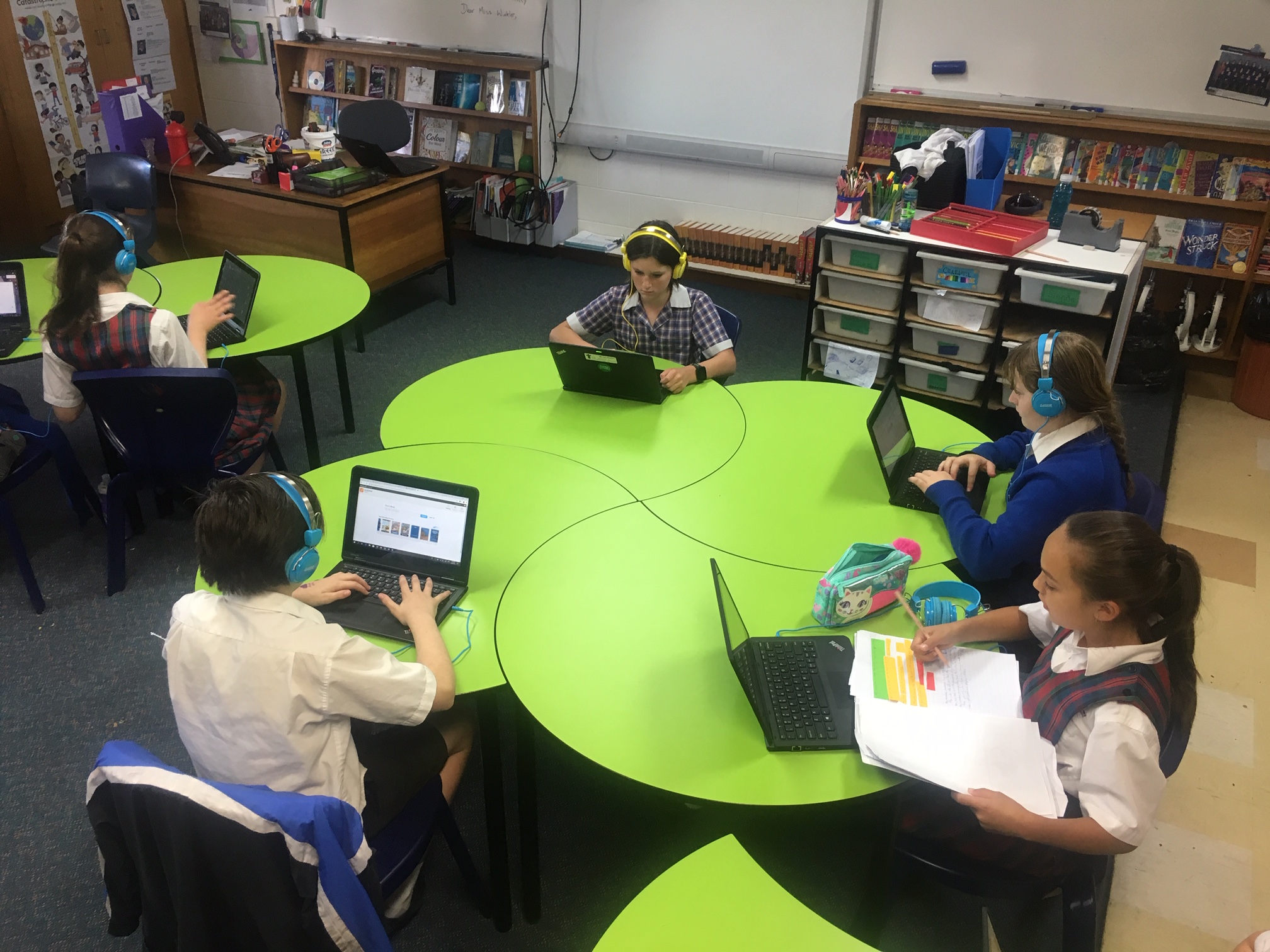Fighting with the Furniture
I believe myself to be open to change and growth both as a professional and as a person, but I recognise to be so I have to be challenged in my thinking and the habits of my mind and practice. This can be uncomfortable.
This has been demonstrated beautifully this year by the arrival of our new desks in Grade 5/6B. Their arrival coincided with me also moving house and so it intensified the process. Change was everywhere!
Our new desks are a beautiful bright green, with matching purple chairs! I do love colour! They are a not rectangular but more ‘petal’ shaped and can be joined together into a variety of configurations. They are also quite a lot larger than more traditional desks.
So, we immediately, and quite excitedly, unpacked them and set them up in our previous desk groupings. And found that we were a bit squishy in our classroom. We had to ditch our Art table. We also had to work out how we would store our ‘stuff’, as these desks do not come with trays. More change. The ergonomically designed chairs were an issue in the first week. Apparently they were scratchy on bare legs. Change was not comfortable.
We persevered with our old desk groupings until the end of Term 1, but realised that if we used the desks in the same way as the previous desks, then we were just being uncomfortable and getting annoyed.
So, this term we have decided as a class to embrace the challenge of the new desks. How can we reconfigure our class to optimise both space and learning? Can we let go of needing a desk to be ‘ours’? Can we move our desks dependent on our lessons? Can we be flexible in space and mind?
At the moment we have a caterpillar formation and move ourselves from internal seating to external seating depending on the lesson. A good process. I have also noticed students moving around and interacting more at food times. At first they kept asking for permission, but now they are starting to understand that they can make good choices without checking with me.
Perhaps that is the aim of modern educators: to encourage students to become independent thinkers and to take charge of their learning and education. To not preside over our classrooms as the queen bees, but to be facilitators of rich, thought-provoking and interactive learning environments. In her blog, veteran elementary school teacher Kelly Almer, offers a detailed description of her move to flexible seating (and its benefits for student learning).
“I will never go back. The room has become ours instead of mine, and this has given my students a sense of ownership and enabled them to become invested in their own education.”
I can feel more change coming. My teacher desk feels enormous and cumbersome… What colour do you think would go with green and purple?
Annie Joy - Primary Coordinator






